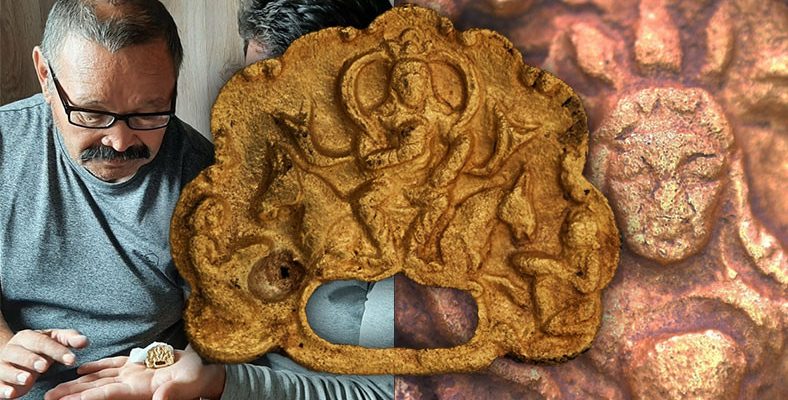The discoveries and findings revealed during the excavations in Kazakhstan were brought to the agenda with very satisfactory explanations.
Studies conducted in Kazakhstan West Gokturk A social complex and artifacts from the period were found. The area where different items are removed, in Turkish history It is the first and most important of its kind. Of course, the real factors that make him important are quite different.
He is the leading name in the studies on this area, which is a treasure for the Turkish world with its architectural structure, findings and belief elements. Prof. Dr. Zainolla SamashevHe gave very full and satisfying explanations. Speaking to TRT Haber for the statements in question, Samashev talked about both the unearthed objects and their importance.
“This is the first time such a place has been discovered.”
“Of course this is the central West In memory of one of the Göktürk Khagans It was a complex built. Afterwards, this place became a great place for the people the khan left behind. to the compensation center It was transformed and a large mausoleum was built here. For the first time, we see such a center at the foothills of the Tarbagatay Mountains in the Altai region of Kazakhstan. Of course, this complex is of great importance for the Turkish world in terms of its architectural style, burial ceremonies, findings and religious belief cult.”
We know that according to old traditions, it was customary to put personal belongings and weapons in the grave during burial ceremonies. For this reason, many findings were obtained from the grave. The most striking among these is a piece on which the Gokturk Khan in question is engraved. belt buckle happened.
On this buckle, we see the kagan sitting on his throne, with his crown on his head and the oath glass in his hand.
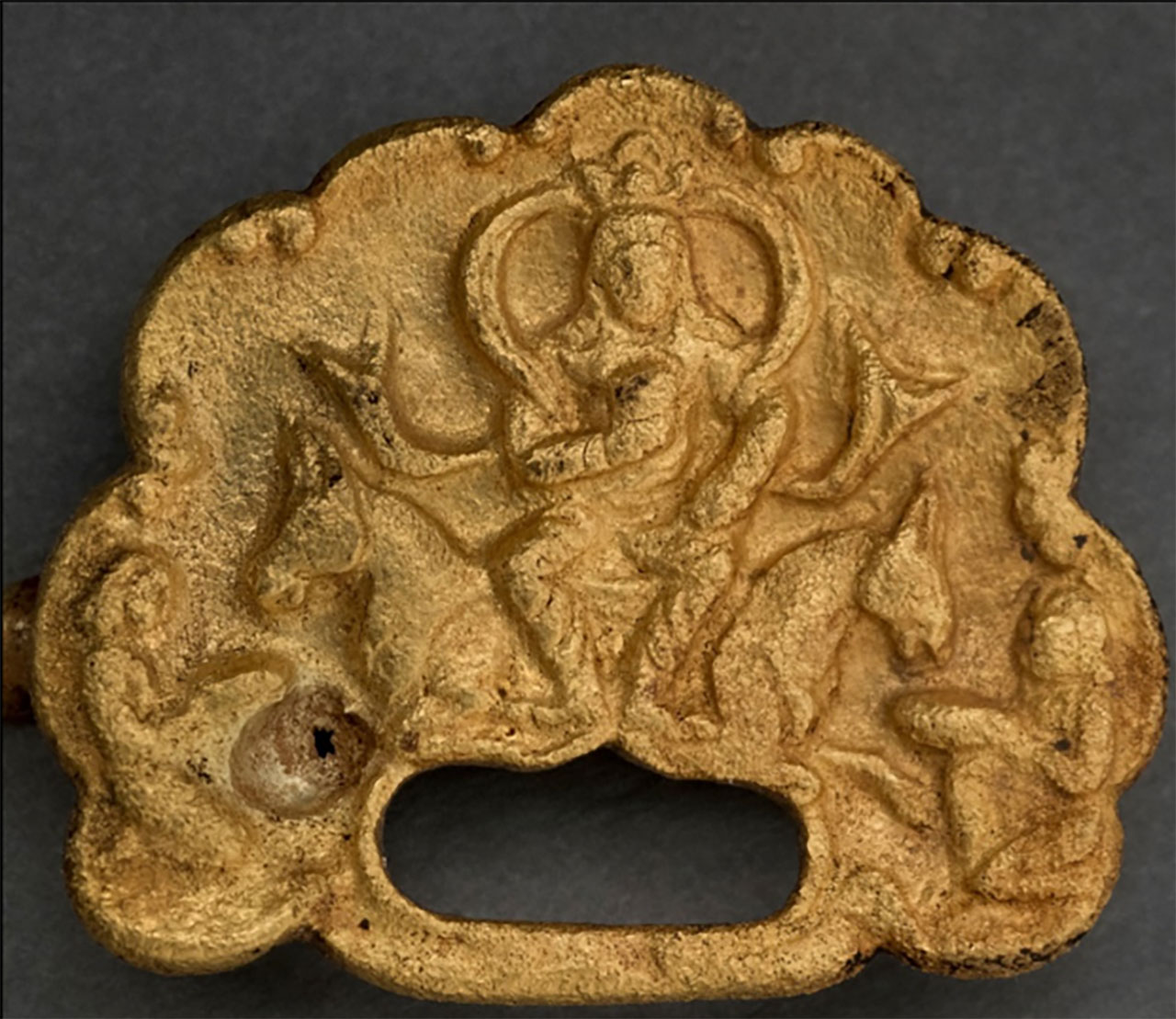
Dr. stated that the khan in the buckle has long hair and is 30-35 years old. Serhan Çınar said the following about this finding:
“The traditional composition of the khan in the ornamental composition Turkish style sitting cross-legged It is seen that he is depicted with a crown resembling a three-cornered halo on his head. In the images on the buckle decoration, the throne on which the kagan sits and the bridesmaids serving him can be clearly seen. The flowers surrounding the throne are frequently used in Buddhist art. lotus flower It is thought to be.”
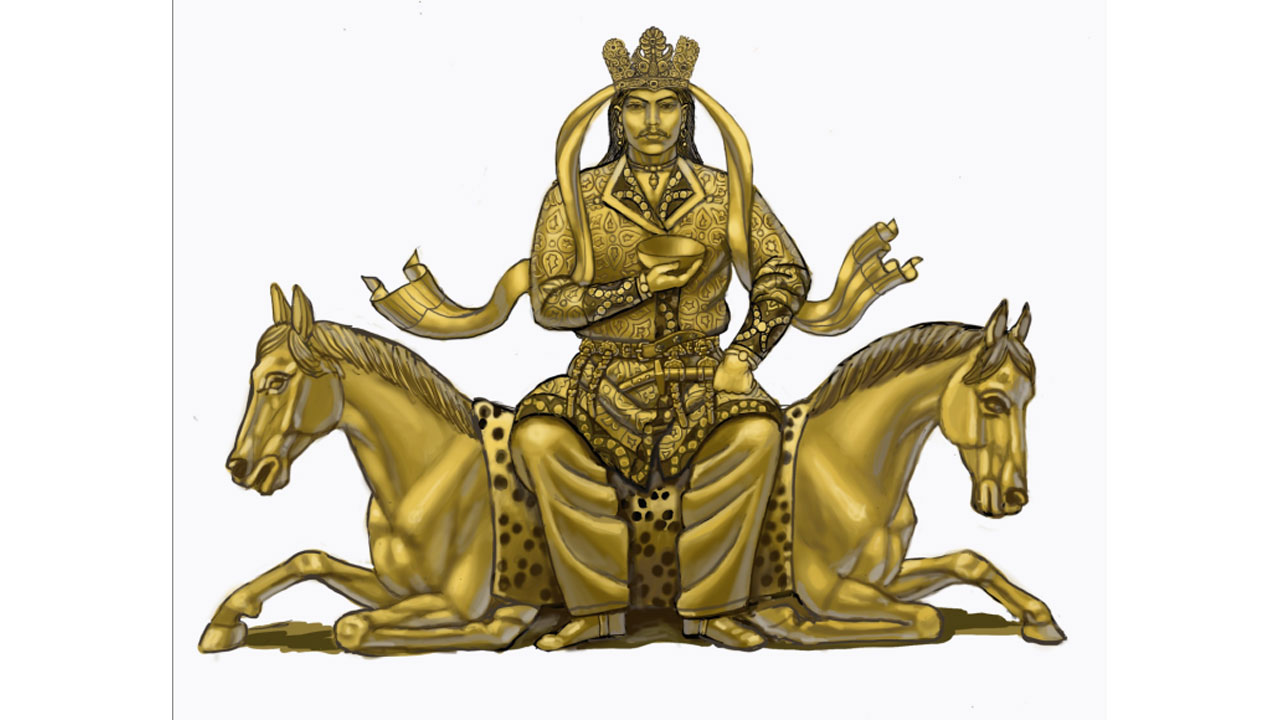
Adding on this, Prof. Dr. Samashev made the following additions:
“The importance of this belt buckle is that there is a person sitting on the throne with a crown on his head. A composition belonging to the Gokturk Emperor to be. Although there is a lot of information in written sources about the accession ceremonies of the Göktürks, archaeological findings have not been identified until today. In this sense, the depiction on the belt buckle found in the Eleke Saz provides us with concrete findings about how the throne ceremonies were performed. In the captured composition, in the front part of the throne where the kagan is sitting, facing east and west There are horse motifs. The composition created in this form gives a unique presentation among the steppe empires.”
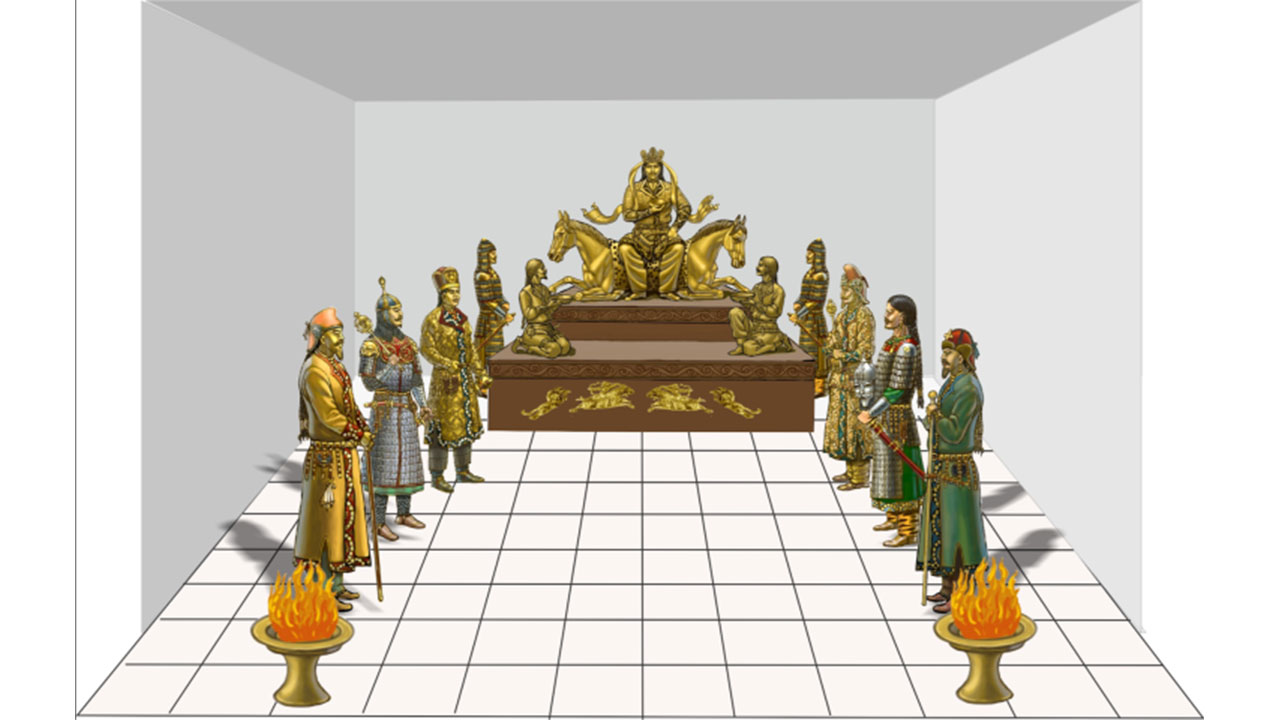
“Another importance of the composition is that the Turkish Khagans How the reception ceremonies for the ambassadors of neighboring states were carried out It’s a scene that shows. On the belt buckle, two people kneeling in front of the kagan are making a presentation to the kagan with a golden plate in their arms. Ceremonial vessels of this type are frequently encountered treats in Turkish ethnography. The presentation portrays the political agreements made by the Göktürk Khagan with neighboring countries or the represents precious gifts. In this form, the ceremonial image presented to the Khagan has a feature that symbolizes the political power of the ruler.”
The buckle dates from the 8th century.
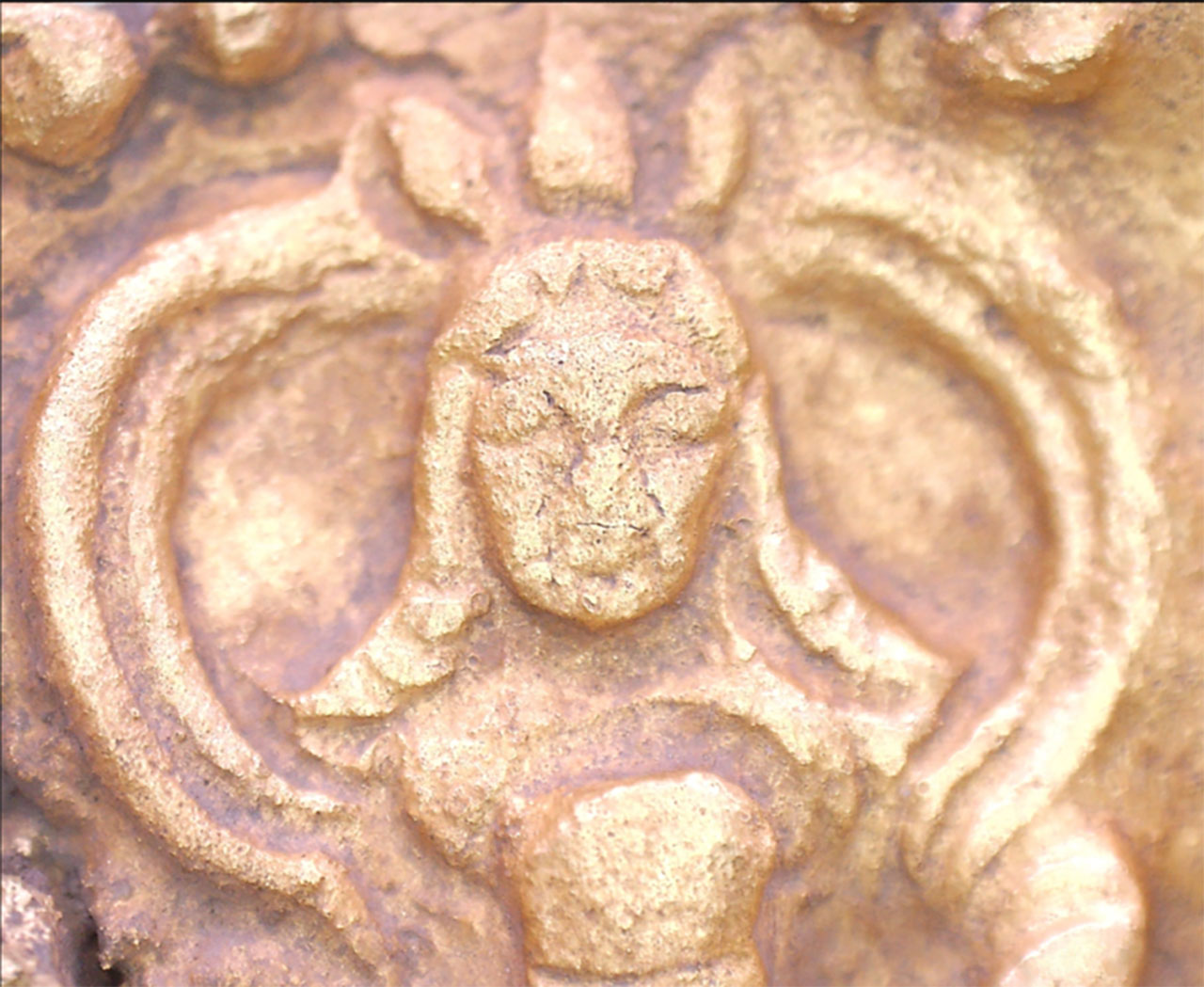
“There is information in historical sources about who were the khans of the Gokturk Empire in the last period of the 8th century. Our first guess is that the images in the depiction are one of the khans from this period. Our second guess is that the complex where the golden belt buckle is located belongs to a Tudun belonging to the Khagan of Ötüken or Suyab, the center of the Western Göktürk Khaganate, and was used as a sign of dominance. The possibility that the ruler gave it to his son as a gift.“
“Again, considering that this belt buckle is an object showing membership of the Ashina lineage, the image of the kagan in the depiction is considered to be the founders of the Gokturk Empire. Possibility of belonging to Bumin or İstemi Kağan it’s coming out.”
Of course, the complex where the buckle is located is also very important.
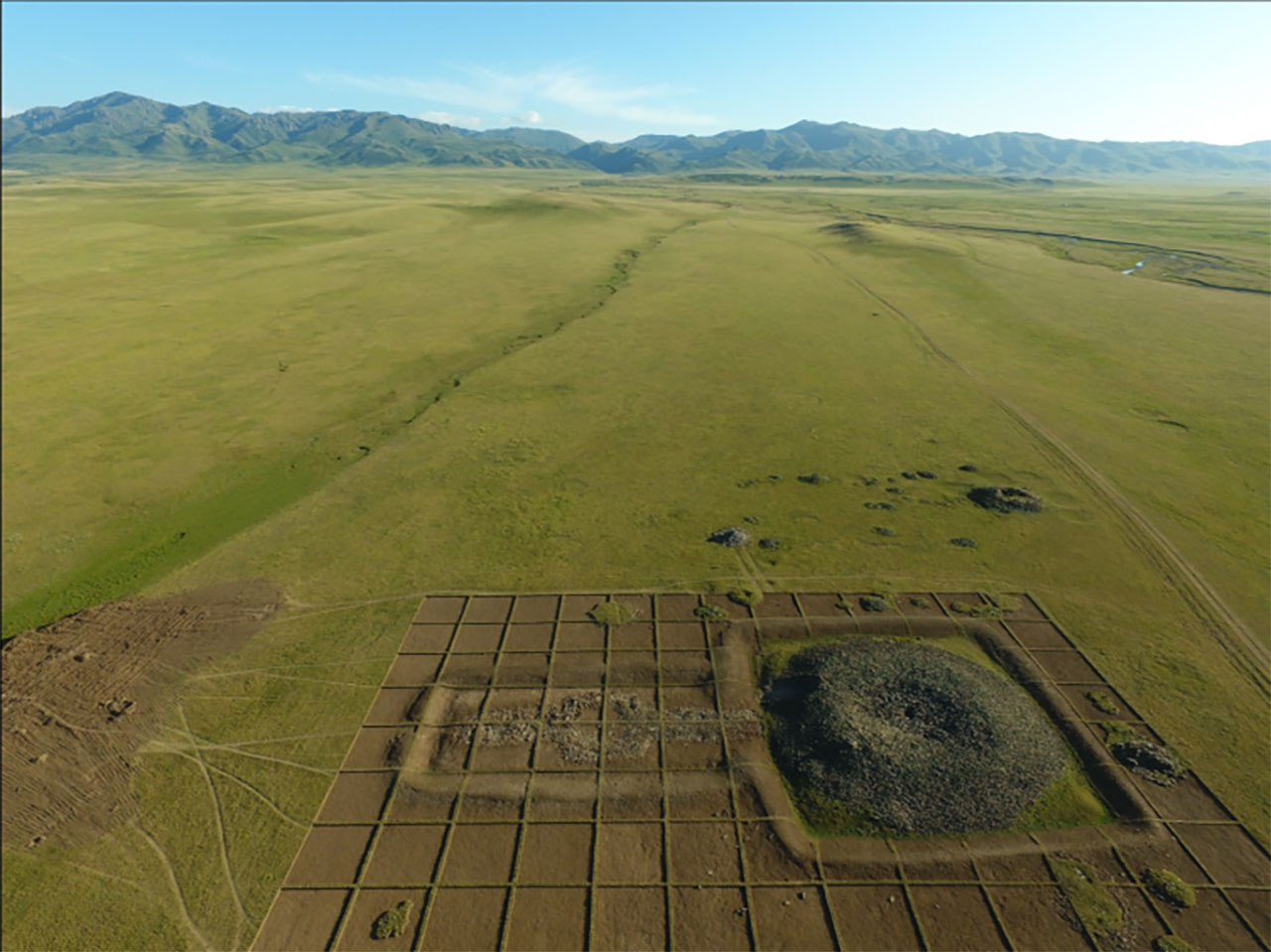
On this subject, Samashev also touched upon the labyrinth that makes the area in question unique and said the following:
“In particular, it provides access to the front reception room located at the entrance of the complex. existence of the labyrinth, is the most important feature that distinguishes the Eleke Sazı social complex from the complex in Şivet Ulan. During religious ceremonies here, influential Gokturk gentlemen were crawling on their knees through this labyrinth at the entrance to the complex. Then, passing through the constantly burning fire ring in the front reception room. getting rid of evil spirits in a pure way where the kagan’s body is located They were going to peace.”
There is a large stone statue depicting the Khagan altar area Once passed, one could access the interior of the burial chamber via stairs. The fire pit where the cremation took place, gold-plated decorations, arrows, swords and many other objects allow us to get an idea about the life of the period. The granite statue we mentioned was preserved in the National Museum in Astana.
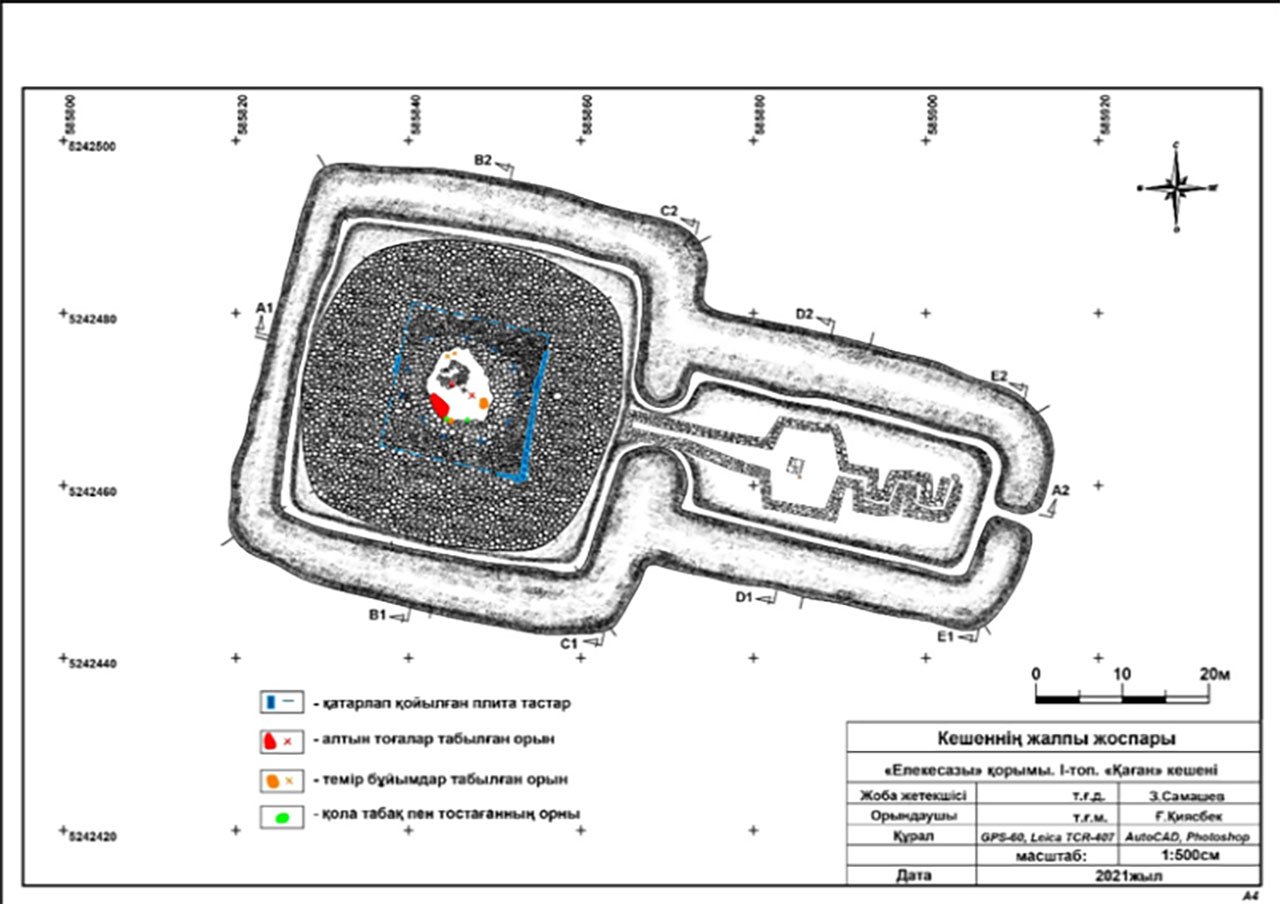
Finally, Samashev explained the importance of the Western Göktürk Period in Turkish history with the following words:
“After the United Göktürk Khaganate was divided into two, it was established in the West Turkestan area. Great Turkic Khaganate The state named after was established. In this political union, not only the steppe tribes but also the settled communities in the Sogdia and Khwarezm regions were included. In this sense Western Göktürk State It was a very rich political union in terms of culture and socioeconomics. The existence of coin minting in the Western Gokturk period indicates an important unification of the political roles of women and the steppe area.”
What are your thoughts about these findings?
RELATED NEWS
A 2250-Year-Old Saw Found in Çorum: Almost Same as the Ones We Use Today!
Source :
https://www.trthaber.com/haber/dunya/israil-ordusunu-gazzedeki-saldirilarinda-cok-sayida-kisi-hayatini-kaybetti-820919.html
